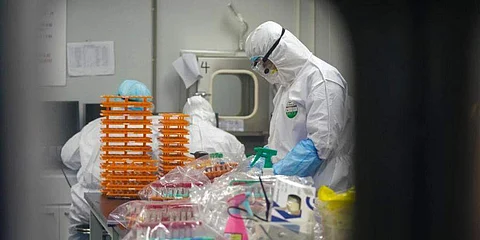

Scientists have identified an alternative amplification technique to detect the genetic material of SARS-CoV-2, that causes COVID-19, which could offer a way to rapidly test a large number of people for the disease.
However, the researchers from Heidelberg University in Germany noted that the technique is not as sensitive as quantitative RT-PCR, the current standard method for COVID-19 testing.
Faster and less complicated testing could aid in the rapid isolation of infected people and help to identify and prevent new outbreaks of the disease until a vaccine becomes available, they said.
The researchers noted that quantitative RT-PCR can successfully detect viral RNA but requires expensive machinery and chemical reagents that can sometimes be in short supply.
The standard method also depends on time-consuming temperature cycling steps to amplify enough RNA from a patient sample for detection, resulting in processing time between three and 24 hours in most clinical laboratories, they said.
In the journal Science Translational Medicine, the researchers propose using a technique called reverse transcription loop-mediated isothermal amplification (RT-LAMP), which can be carried out at a constant temperature using simple equipment and a different set of reagents.
In their tests of RNA isolated from 768 nasopharyngeal swabs from individuals tested for COVID-19, the researchers determined that RT-LAMP was less sensitive than quantitative RT-PCR but could be used to evaluate large groups of people, with an average test processing times of 30 minutes.
They concluded that RT-LAMP works best for identifying people with moderate to high amounts of SARS-CoV-2 virus in their bodies but is not sensitive enough to identify infection in people with a low viral load -- such as those at the beginning or end of the illness.
The researchers also tested the possibility of using RT-LAMP directly on nasopharyngeal swabs -- without the need for RNA isolation -- but concluded this technique was less sensitive than using isolated RNA.
